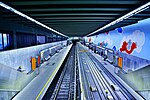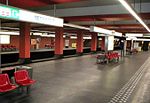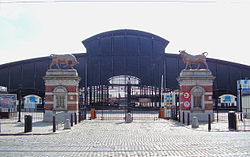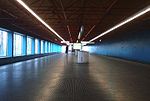Brussels-West station
Brussels metro stationsMolenbeek-Saint-JeanRailway stations in Brussels

Brussels-West Station (French: Gare de l'Ouest, Dutch: Weststation) is a multimodal transport hub located in the municipality of Molenbeek-Saint-Jean, in the western part of Brussels (Belgium). The metro station opened on 6 October 1982 as part of the Beekkant–Saint Guidon/Sint-Guido extension of former line 1B. Following the reorganisation of the Brussels metro on 4 April 2009, it is served by lines 1, 2, 5 and 6.
Excerpt from the Wikipedia article Brussels-West station (License: CC BY-SA 3.0, Authors, Images).Brussels-West station
Avenue Joseph Baeck - Joseph Baecklaan,
Geographical coordinates (GPS) Address Nearby Places Show on map
Geographical coordinates (GPS)
| Latitude | Longitude |
|---|---|
| N 50.848888888889 ° | E 4.3208333333333 ° |
Address
Gare de l'Ouest - Weststation
Avenue Joseph Baeck - Joseph Baecklaan
1080
Belgium
Open on Google Maps











